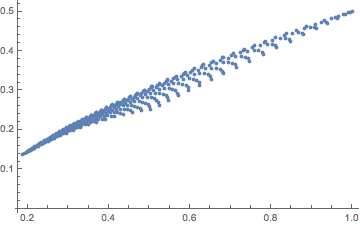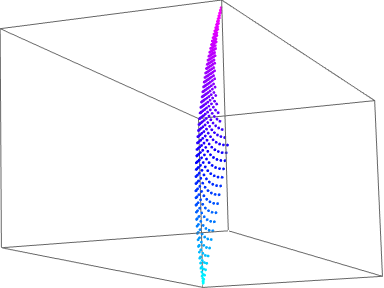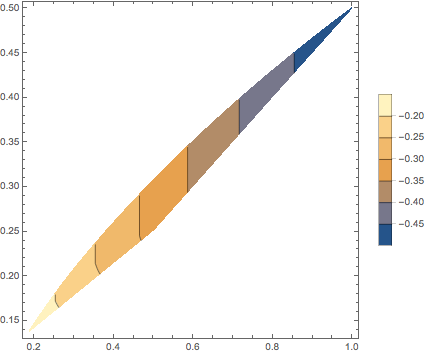I have some Table of `{x,y,z}` values (energy as a function of
radial and azimuthal frequencies in a galaxy if you care to know):
dat = Import["https://dl.dropboxusercontent.com/u/659996/odd-data.m"];
If I plot the position of the `{x,y}`
pl1 = Most /@ Flatten[dat, 1] // ListPlot
I get this

Note that there is nothing pathological in the distribution of points as seen
from this 3D view
Map[{Hue[#[[3]]], Point[#]} &, Flatten[dat, 1]] // Graphics3D

If I now plot contours of `z[x,y]`, I get that:
pl2 = ListContourPlot[Flatten[dat, 1], PlotLegends -> Automatic,PlotRange -> All]

**PROBLEM**
Now the puzzling fact is that it seems mathematica gives me contours
at values of `{x,y}` which I have not sampled.
This is best seen in the superposition:
Show[pl2, pl1]

e.g. for values of `x=0.3 y=0.175`.
**QUESTION**
> Is this a bug?
or am I missing something obvious?
**UPDATE**
I guess *mathematica* cannot guess any obvious boundary to my sets of `x,y` coordinates other than the Convex Hull has mentioned by @belisarius so the Bug is in my head.